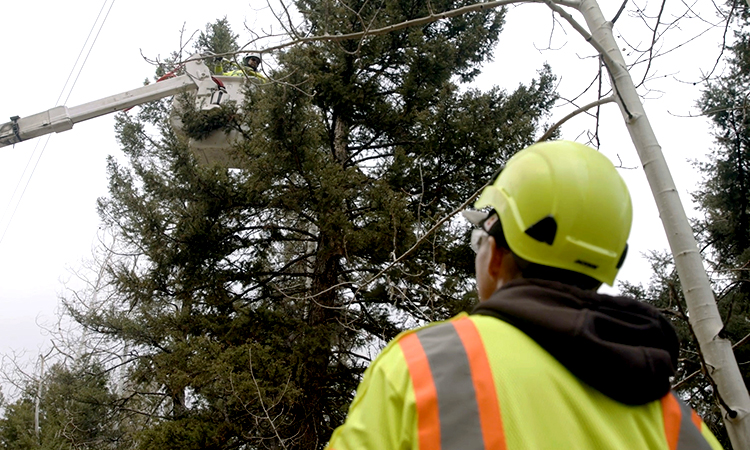
Most inspections are conducted by personnel visually examining facilities, though we increasingly use infrared cameras and drones for this work. Inspectors look for a variety of possible issues, including broken or loose hardware, mechanical damage to components and uninsulated secondary conductors.
Overhead Distribution Line Inspection Program
CORE performs overhead distribution inspections on a seven-year cycle. Main feeds and circuits located in the Level 5 high-risk fire area are inspected on a three-year cycle. Currently, inspections are completed by walking or driving the lines. The inspectors look for broken or loose hardware; mechanical damage to any component; the condition of guy wires and anchors; replacement of uninsulated open wire secondary conductors; condition of insulators and conductors; condition of disconnects and fuse holders; condition of risers and conduits; condition of transformers, switches, reclosers, voltage regulators, cap banks; and the need for additional cover-up and animal guards. Ground conductors, signs, and other minor hardware also are inspected.
The use of infrared cameras and drones has been increased to perform these inspections. In 2022, a total of approximately 15,000 poles were inspected by drone throughout the service territory. The drones capture several images per pole in both High Definition and InfraRed that are analyzed to identify any of the defects listed above from a top-down and side view. Thus far the program has been very successful in identifying defects and allow linemen to spend more time making repairs, thereby expediting the inspection program.
Transmission Line Inspection Program
CORE performs inspections of the transmission facilities on a three-year cycle, which includes video or still photographs of each structure, a written summary of maintenance issues and ROW issues, and a general report regarding line segment condition with recommendations of major maintenance or rebuild. Patrols are primarily done using a helicopter for 115kV lines, and by drones or helicopters for the 44kV system. Due to average equipment age and narrow right of way, CORE’s 44kV system in the Conifer district will be inspected every year. Every other inspection cycle (or every six years), LiDAR and infrared photography will be included in the inspections. Inspections include the condition of line structures and attachments, any structural problems and safety hazards, damage to insulators, vibration-dampers, hardware, conductors, static shield wires, optical ground wires, signs of hot spots, vegetation growth, and tower identification signs.
All maintenance issues found during line patrol(s) are rated for severity by a qualified CORE employee or contractor, mitigation performed, and completion documented.
Wood Pole Testing Program
CORE’s wood pole testing program requires all poles to be tested on a 15-year cycle to determine the structural health of the pole. Poles less than 15 years old require a visual inspection; all others require both above and below ground line inspections. This program replaces or reinforces poles per the test and inspection result recommendations. All findings are documented and reject poles are categorized as non-restorable or restorable, as well as whether that reject pole is priority or non-priority.
